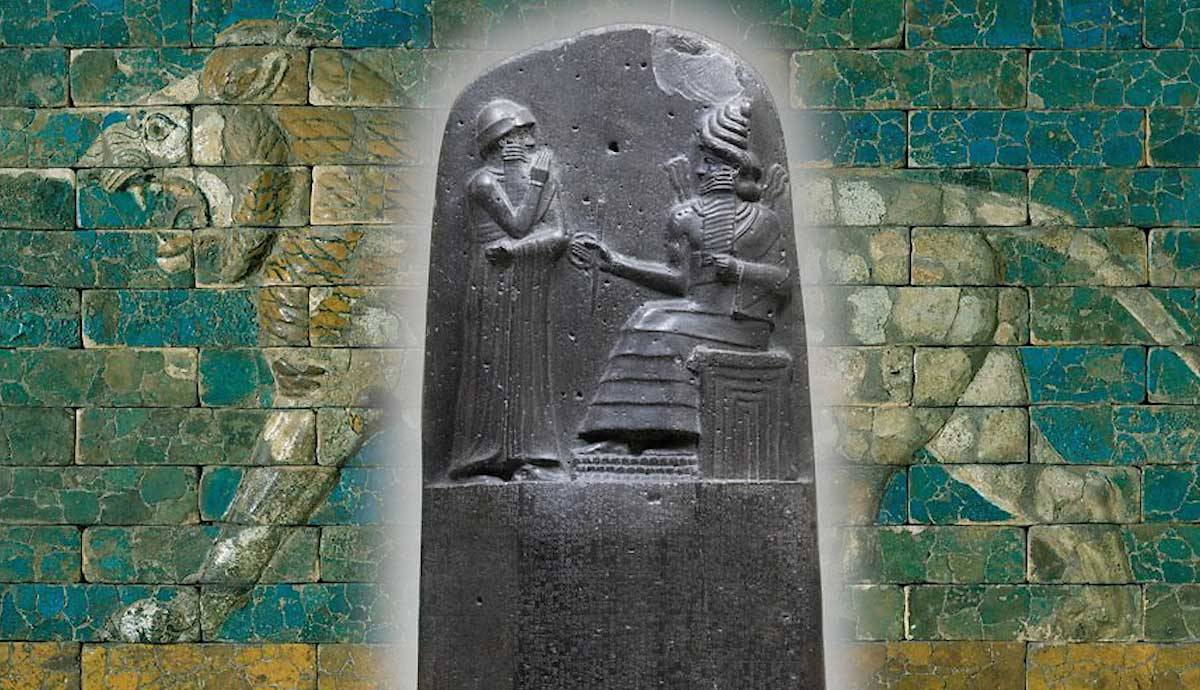
Ancient Mesopotamia, also known as “the Fertile Crescent” and “the Land Between Two Rivers,” is sometimes more fittingly referred to as “the Cradle of Civilization.” This is due to the swath of land between the Tigris and Euphrates Rivers (modern-day Iraq) being the birthplace of what we today believe constitutes a civilization: a group of people governed by laws, exchanging goods and ideas through trade, cultivating natural resources, keeping written records, and creating material culture. Due to the vast majority of people in ancient Mesopotamia being illiterate, the decorative and utilitarian artifacts they created over several millennia shed light upon this first culture which laid the groundwork for many that followed.
The earliest Mesopotamian culture, which began circa 3500 BCE, was that of Sumer. The Sumerians essentially started their civilization from scratch, creating the idea of a monarchical government, a written script, and an all-pervasive polytheistic religion. Perhaps somewhat surprising is the stunning and intricate artwork created by the Sumerian people as they strove to make sense of their world.
Ancient Mesopotamia Through 7 Key Artifacts
1. Standing Male Worshipper
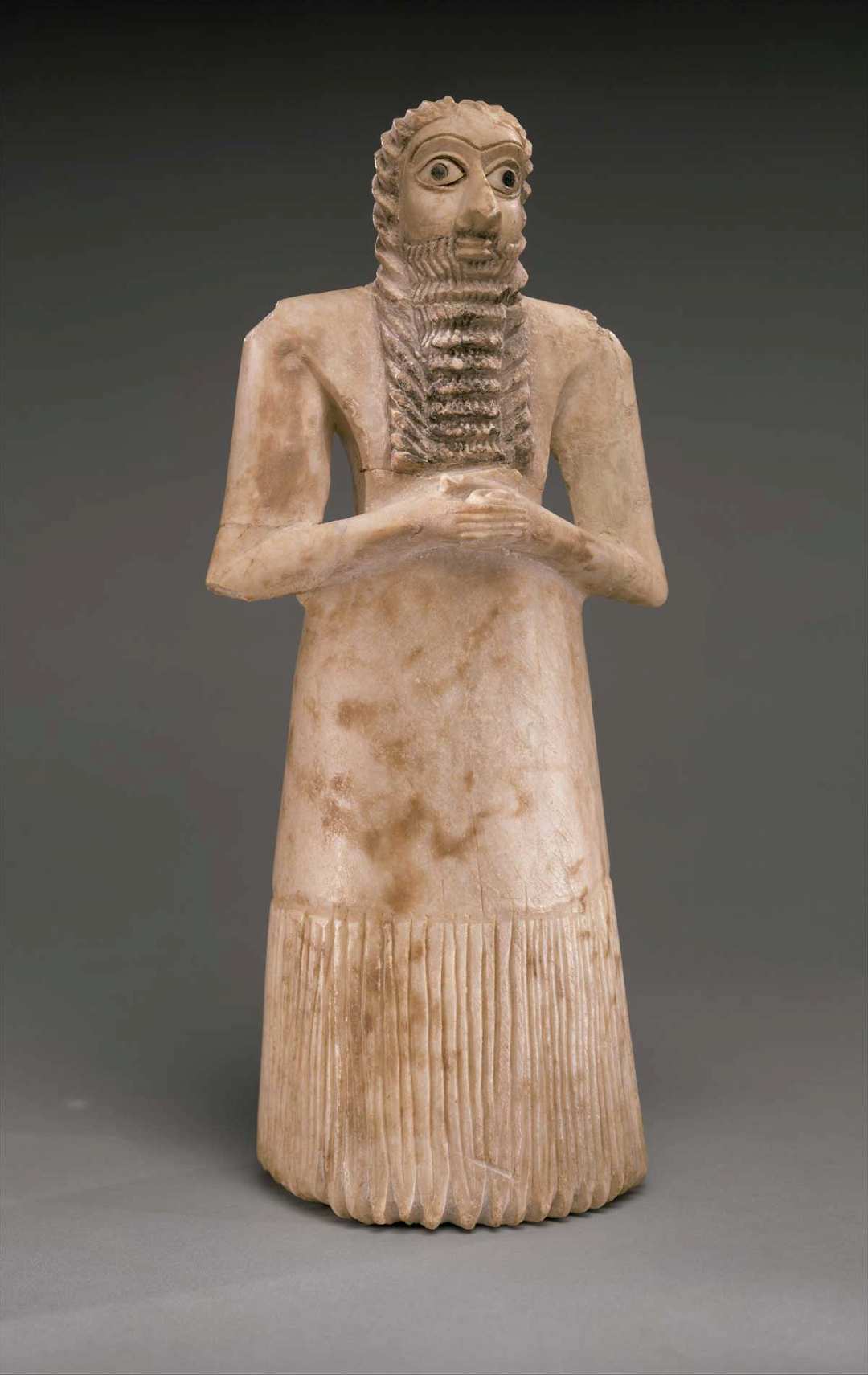 Standing Male Worshipper, 2900 BCE, via The Metropolitan Museum of Art, New York
Standing Male Worshipper, 2900 BCE, via The Metropolitan Museum of Art, New York
The Standing Male Worshipper is a simple but significant artifact which is a testament to the Mesopotamians’ deep religious convictions that their pantheon of gods controlled everything. Such statues were placed in temples to pray on behalf of the person who put them there.
The statue’s clasped hands are a sign of reverence, while the wide eyes indicate that the individual is attentive to the gods. Sumerians believed that humans were present in such statues, thus praying to their gods in perpetuity. While this particular statue is believed to be dedicated to the god Abu (a minor agricultural god), similar statues have been discovered throughout Southern Iraq, reflecting the ubiquity of Sumerian temples dedicated to their gods in the hopes of good harvests and good fortune.
Get the latest articles delivered to your inbox
Sign up to our Free Weekly Newsletter
2. The Standard of Ur
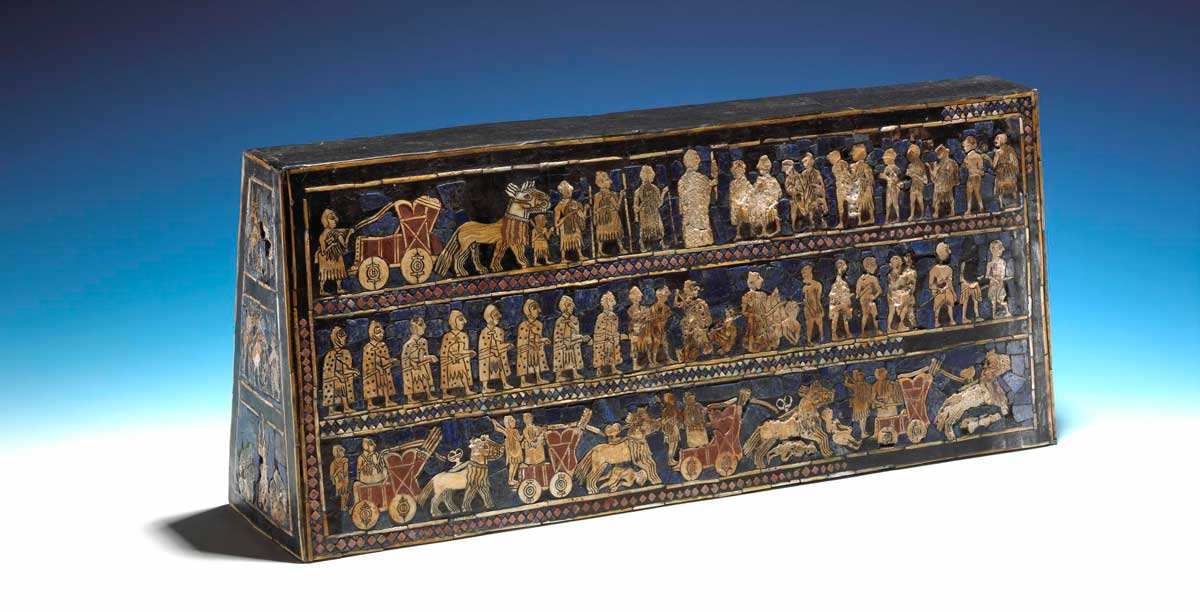 The Standard of Ur, 2500 BCE, via The British Museum, London
The Standard of Ur, 2500 BCE, via The British Museum, London
Excavated by Sir Leonard Woolley from the Royal Cemetery, the Royal Standard of Ur, while somewhat mysterious in terms of its original purpose, provides an excellent window into Sumerian warfare.
Depicted on one side is a scene of war showing enemies being trampled by newly invented chariots. The other side clearly shows peace and perhaps even a victory celebration, complete with the display of booty or tribute from the vanquished enemy. Additionally, The Royal Standard of Ur is irrefutable evidence that the Sumerians were active traders with access to a vast network; the carnelian, gold, and lapis lazuli used to fashion this object were not native to the region, so it is possible that they were trading with peoples from as far away as Afghanistan or even India. The use of such rare materials indicates that this was a ceremonial object.
This object demonstrates the astonishing skill and craftsmanship of the Sumerians as well as their impressive ability to tell a story and record history through their art. Viewers get a sense of the social hierarchy that characterized early Sumerian society as indicated by the relative size of some of the figures and by the activities in which they are engaging.
3. The Code of Hammurabi
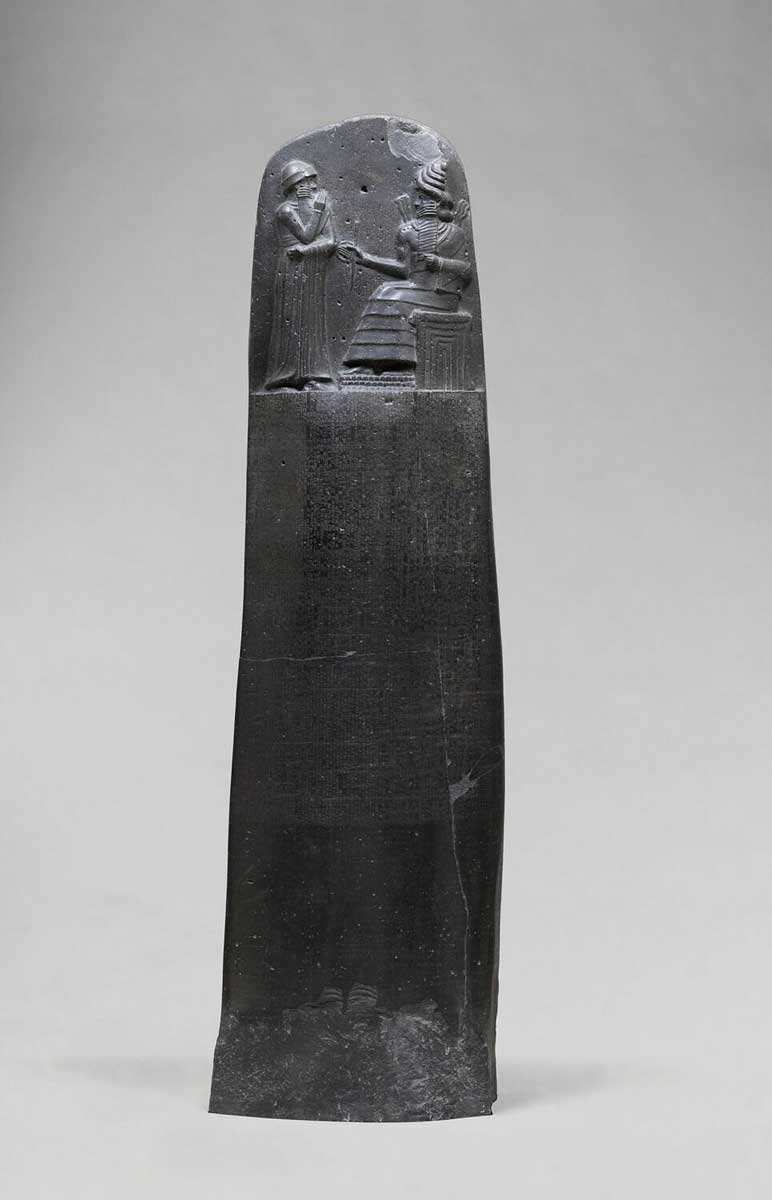 The Code of Hammurabi, 1792 – 1750 BCE, via the Louvre Museum, Paris
The Code of Hammurabi, 1792 – 1750 BCE, via the Louvre Museum, Paris
Hammurabi was a Babylonian king who is credited with first codifying laws. Written in cuneiform, the 282 laws dealt with marriage, family, employment, and other issues of the day while enforcing draconian punishments for infractions as a deterrent. The Code was divinely sanctioned as depicted in the top third of the stele; Hammurabi, shown in a reverent posture, receives the rod and ring from Shamash, who bestows power upon the king. The artistic choices made on the stele are quite deliberate, as they had to essentially interpret the text below the image for those who were illiterate. Shamash, seated atop a throne, would tower over Hammurabi were he to stand up. His divinity is indicated by the wavy lines emanating from his shoulders. Hammurabi almost cowers in the presence of the sun god, indicating the very nature of the theocratic rule in Babylon at the time.
4. Human-Headed Winged Lion (Lamassu)
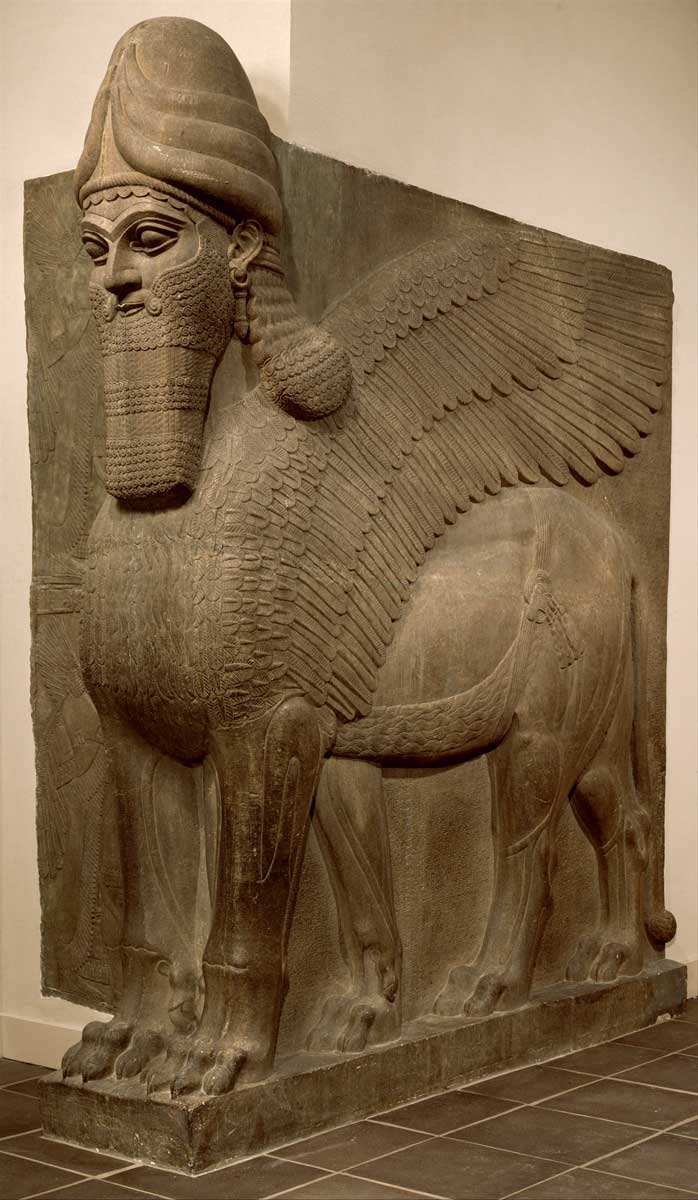 Human-headed winged lion (lamassu), ca. 883 – 859 BCE, via the Metropolitan Museum of Art, New York
Human-headed winged lion (lamassu), ca. 883 – 859 BCE, via the Metropolitan Museum of Art, New York
In the eyes of the ancients, doorways needed protection as they symbolized thresholds and transitions. Standing guard at the palace of King Ashurnasirpal in Nineveh was the lamassu, a popular composite creature in Mesopotamian art. Composite creatures were common in Mesopotamian art because the powers and qualities of the animals or of the gods they represented were believed to be present in the sculptures themselves.
The brilliance of this particular sculpture is that it has five legs to accommodate different points of view. Approach the lamassu head on and the viewer sees only its front legs as if the beast is at attention. Approach from the side and the creature’s right front leg is obscured and it appears to be striding forward. This consideration of the viewer’s perspective and novel rendering of a guardian animal is not something seen in the art of other ancient cultures; this artistic choice demonstrates the Mesopotamians’ advanced thinking. Given the ferocity of the Assyrians and their focus on developing their military prowess, it is somewhat surprising that they took such care with the construction of their palaces and art.
While examples of lamassus are in the Louvre and the British Museum in addition to the Metropolitan Museum of Art in New York, sadly those which were in the Baghdad Museum were destroyed by terrorists in the past decade because they were seen as idols.
5. Cylinder Seal and Modern Impression: Hunting Scene
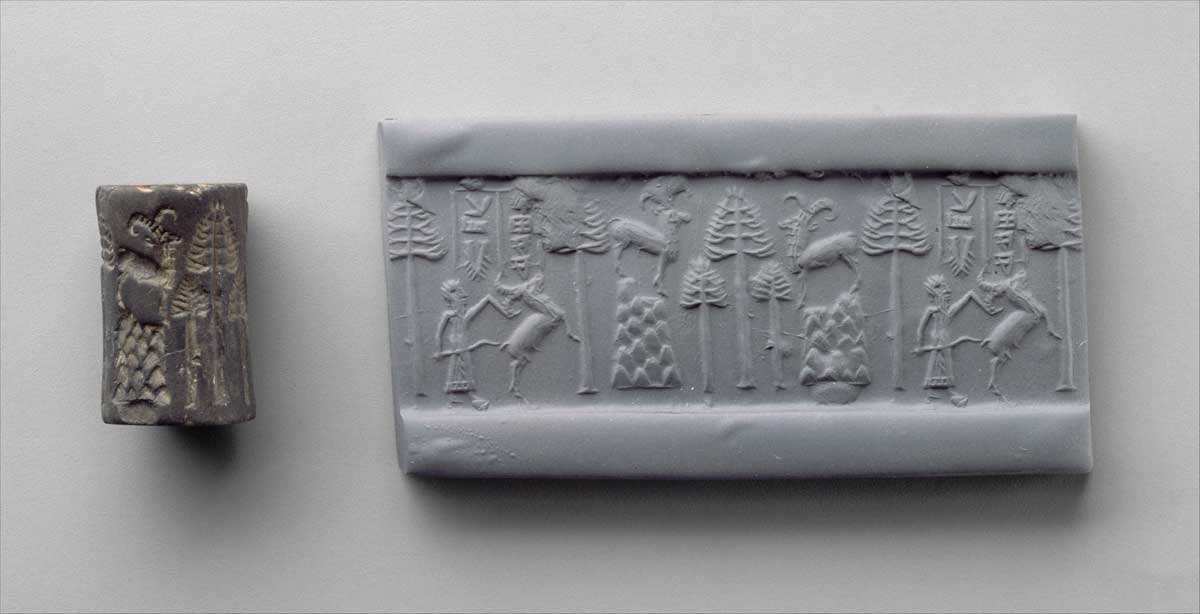 Cylinder Seal with a hunting scene and modern impression, ca. 2250 – 2150 BCE, via the Metropolitan Museum of Art, New York
Cylinder Seal with a hunting scene and modern impression, ca. 2250 – 2150 BCE, via the Metropolitan Museum of Art, New York
Cylinder seals were common items which almost everyone would have owned regardless of social class. In essence, they served as the individual’s signature in a society where the vast majority was illiterate. People needed to sign documents, trade agreements, and economic transactions, so cylinder seals were used for this purpose. The people of Mesopotamia seemed to have a strong sense of personal accountability, as evidenced in documents as far-reaching as the Code of Hammurabi and as narrow in scope as a trade deal between two merchants. Less common but in keeping with the strong sense of religion in Mesopotamia was the use of cylinder seals as spiritual objects. Some seals bore designs that were believed to have the power to ward off evil spirits.
The brilliance of Mesopotamian art lies in the fact that their utilitarian objects were also works of art themselves. Seals were made of a wide range of materials, including limestone, lapis lazuli, or hematite, while gold and silver were reserved for the seals of high-ranking individuals. The scenes were carved in reverse so that when rolled on wet clay, they would leave behind an impression (i.e., the owner’s signature). The seals often had a small hole through them so that they could be worn as a necklace, almost akin to a modern identification card. An alternative to the cylinder seal was the stamp seal which essentially served the same purpose.
6. Panel With Striding Lion
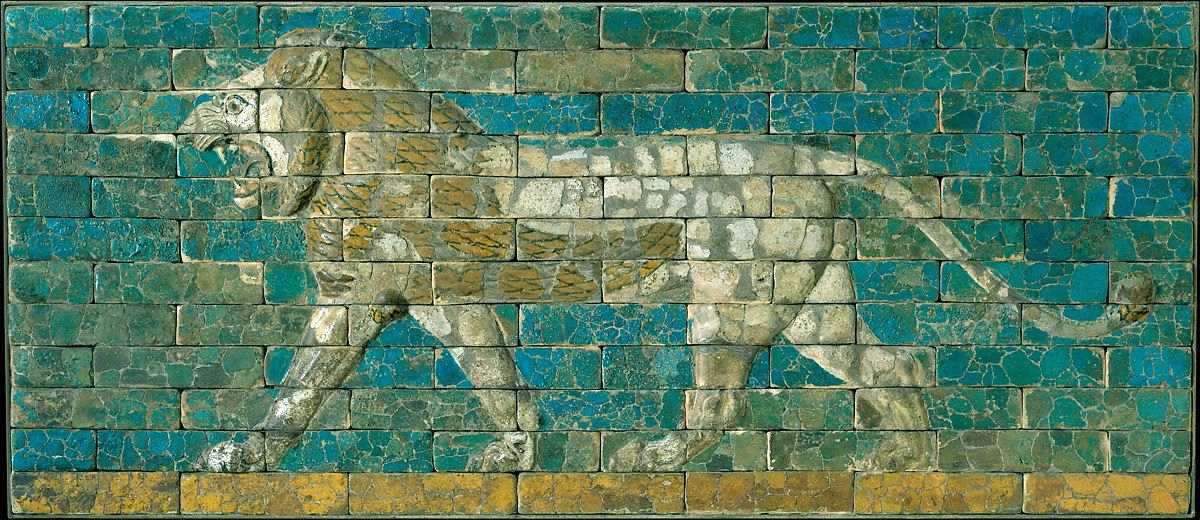 Panel With Striding Lion, ca. 604 – 562 BCE, via the Metropolitan Museum of Art, New York
Panel With Striding Lion, ca. 604 – 562 BCE, via the Metropolitan Museum of Art, New York
The Panel With Striding Lion consists of molded bricks made of clay, an abundant resource in Mesopotamia due to its location in the valley between the Tigris and Euphrates Rivers. The bricks were fired in a kiln and glazed with mineral-based pigments. The blue and gold on the panel (which is also the color scheme on the Gate of Ishtar) are two of the colors that the Babylonians associated with protection.
Over 100 panels like this one decorated the Processional Way in Babylon (which means “gate of the gods”) in the seventh and sixth centuries BCE. The street was named “the enemy shall never pass” (“aibur-shabu” in Babylonian). The lion which represented Ishtar, the goddess of love and war, was used to protect the route along which religious icons were carried on New Year’s Day during the Akitu Festival. The route ran between the Temple of Marduk (in whose honor the festival was held) and the famed Ishtar Gate, erected by Nebuchadnezzar II during the Neo-Babylonian period. The ubiquitous presence of lions and other creatures, such as dragons, imbued with divine spirits, reminded residents as well as visitors that the city was protected by the gods. To remain in their good favor, people had to conduct themselves appropriately, including praying and making offerings.
7. The Royal Game of Ur: A Board Game from Ancient Mesopotamia
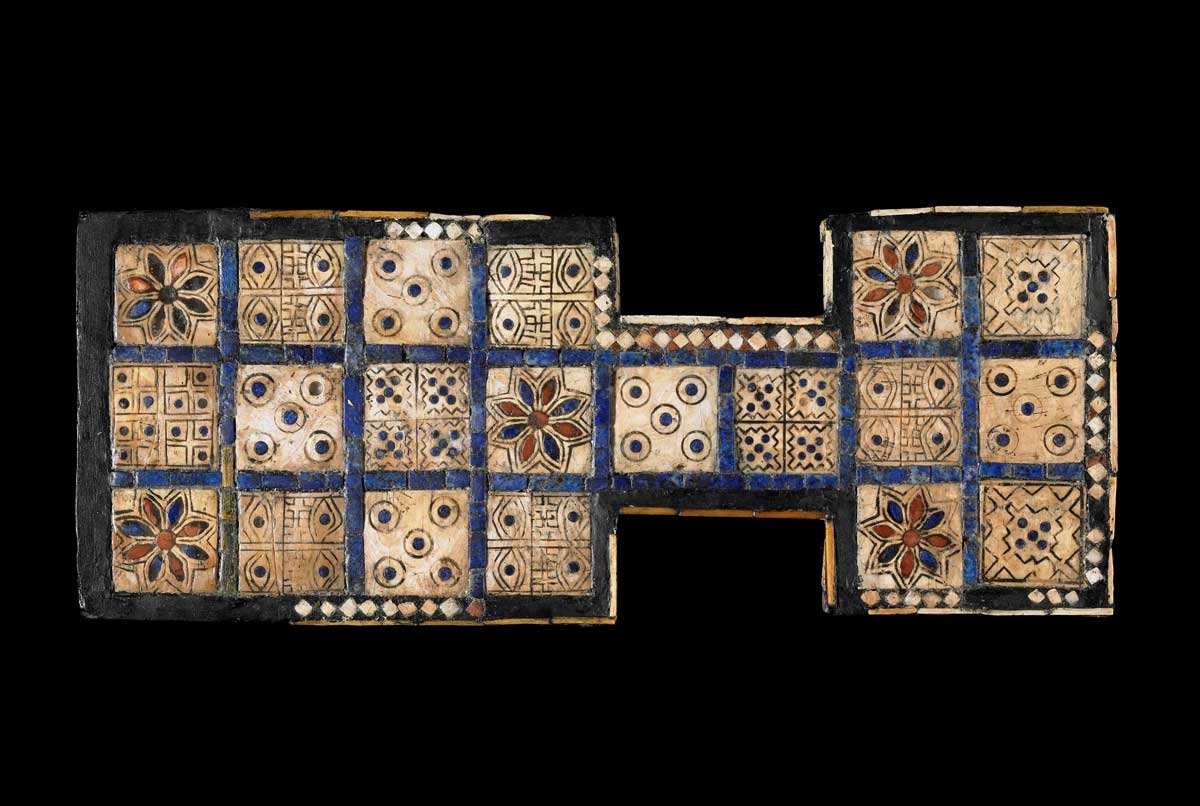 The Royal Game of Ur, ca. 2600 – 2400 BCE, via The British Museum
The Royal Game of Ur, ca. 2600 – 2400 BCE, via The British Museum
Perhaps the oldest board game in the world, The Royal Game of Ur indicates not only that the people of Mesopotamia had leisure time but also that they had a vast trade network through which they were able to obtain luxury items such as the gold, lapis lazuli, and carnelian inlaid in the wooden board. Excavated in 1928 by Leonard Woolley as part of the horde at the Royal Cemetery of Ur, this game board is made predominantly of wood and inlaid shell. This was one of five game boards discovered during this world-renowned excavation. It is believed that the game was played by members of various social classes for over a millennium. In fact, evidence of similar games has been discovered in other cultures, including Egypt and India.
It is believed that this game, also known as the Game of 20 Squares, was the precursor for backgammon and other similarly structured board games. Archaeologists have also discovered the board’s layout etched into various surfaces throughout the Middle East. It was not until the 1980s that historians had any idea how to play the game. The interpretation of a cuneiform tablet by Irving Finkel of the British Museum revealed that the game is a race to get playing pieces around the board, much like many of today’s board games. Some believe that landing on squares with certain designs will bring the player good fortune.
The Royal Game of Ur not only indicates the tremendous skill and precision of the craftspeople who made it but also speaks to the ingenuity of this early civilization. Craftspeople were entrusted to make objects using rare luxury items obtained through trade, but, perhaps more significantly, they were also tasked with creating a way to entertain and even challenge people of the day. The very notion that the Mesopotamians had free time indicates just how much more advanced they were than their Bronze Age predecessors, who were simply focused on survival.
In sum, Mesopotamia represents the first civilization to not only make visually appealing utilitarian objects but also to make art for art’s sake, a phenomenon that continues to this day.